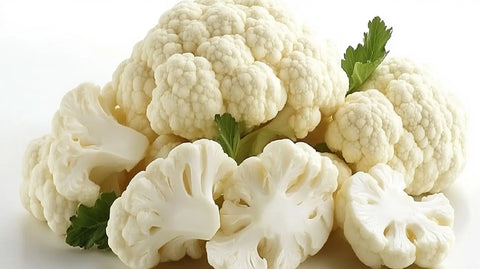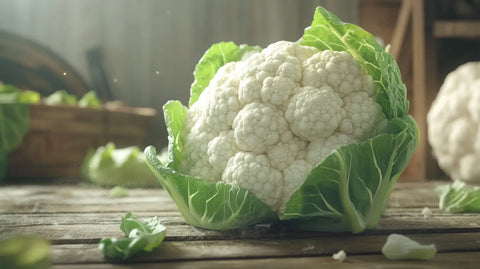Is Cauliflower a Product of Human Innovation?
Cauliflower, a member of the Brassica oleracea family, shares its lineage with various beloved vegetables, including kale, broccoli, and cabbage. Its distinctive shape and culinary versatility have been shaped by centuries of selective breeding, much like how specific dog breeds have evolved to exhibit desired traits.
The Origins of Cauliflower
Cauliflower has a rich history that dates back thousands of years, making it a staple in various cuisines. Its journey includes:
-
Ancient Ancestry: Originating from a wild type of cabbage thriving along the cliffs of the Mediterranean, cauliflower's roots stretch back to antiquity. Historical records indicate its existence as early as the 4th century B.C.E. in Greece.
-
European Introduction: By the 12th century, cauliflower began to make its way through Europe, with its first appearance in London markets recorded in 1619 and in India by 1822.
-
North American Popularity: Pioneers introduced cauliflower to North America, where it gained popularity by the 1920s.
Despite common misconceptions, cauliflower is not a genetically modified organism (GMO). Instead, it is a product of selective breeding—an ancient agricultural practice that allows farmers to cultivate plants with desired traits.
Varieties of Cauliflower
Today, cauliflower is available in an array of colors and types, each with unique characteristics:
- Alverda: A sweet, lime-green variety favored in Indian cuisine.
- Fioretto: Characterized by small yellow blossoms, perfect for Asian dishes.
- Depurple: This purple hybrid offers a nutty flavor and is rich in antioxidants and fiber.
For those interested in the intricacies of selective breeding, Michael L. Witten's book, The Story of Selection and Evolution of the Cruciferous Vegetables, provides an insightful exploration of how farmers cultivate distinct varieties of cauliflower and other cruciferous vegetables.

Nutritional Benefits
Cauliflower has emerged as a popular alternative to rice and potatoes, celebrated for its impressive nutritional profile:
- Rich in Vitamins: High in vitamins C and K, essential for overall health.
- High in Fiber: Supports digestive health and helps maintain a healthy weight.
- Antioxidant Properties: Known for its anti-inflammatory and potential cancer-preventive effects.
Though some may argue that cauliflower is a man-made creation, it is essential to recognize its natural origins and health benefits.

Growing Cauliflower
As a member of the cruciferous vegetable family, cauliflower is not only delicious but also adaptable to various diets. Here are key considerations for cultivating this versatile vegetable:
- Soil Requirements: Ensure a soil pH of 6.5 or higher with good drainage and ample organic matter.
- Growing Time: Cauliflower typically takes five to ten weeks to mature.
- Harvesting Tips: Blanch heads to prevent discoloration by tying the outer leaves together and regularly checking for pests. Consider self-blanching varieties that protect the heads naturally.
In conclusion, cauliflower is a remarkable testament to human ingenuity and agricultural practice. The next time you enjoy a delectable dish featuring this vegetable, remember its journey from wild cabbage to the beloved staple it is today.



















































Leave a comment